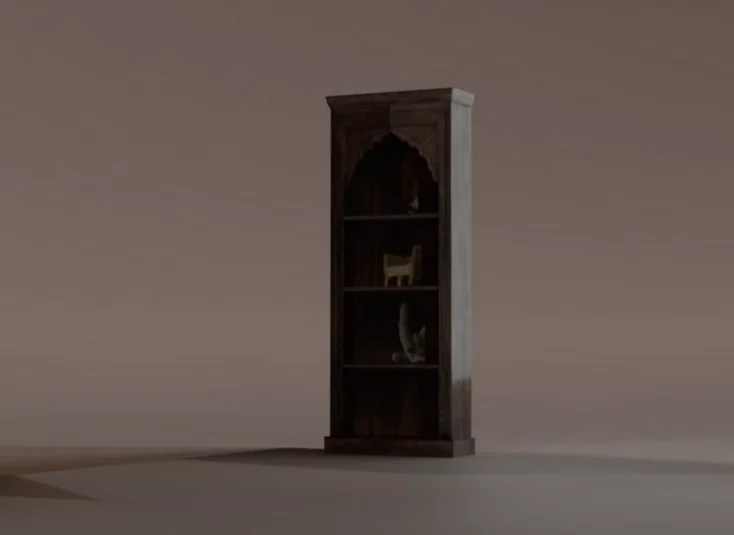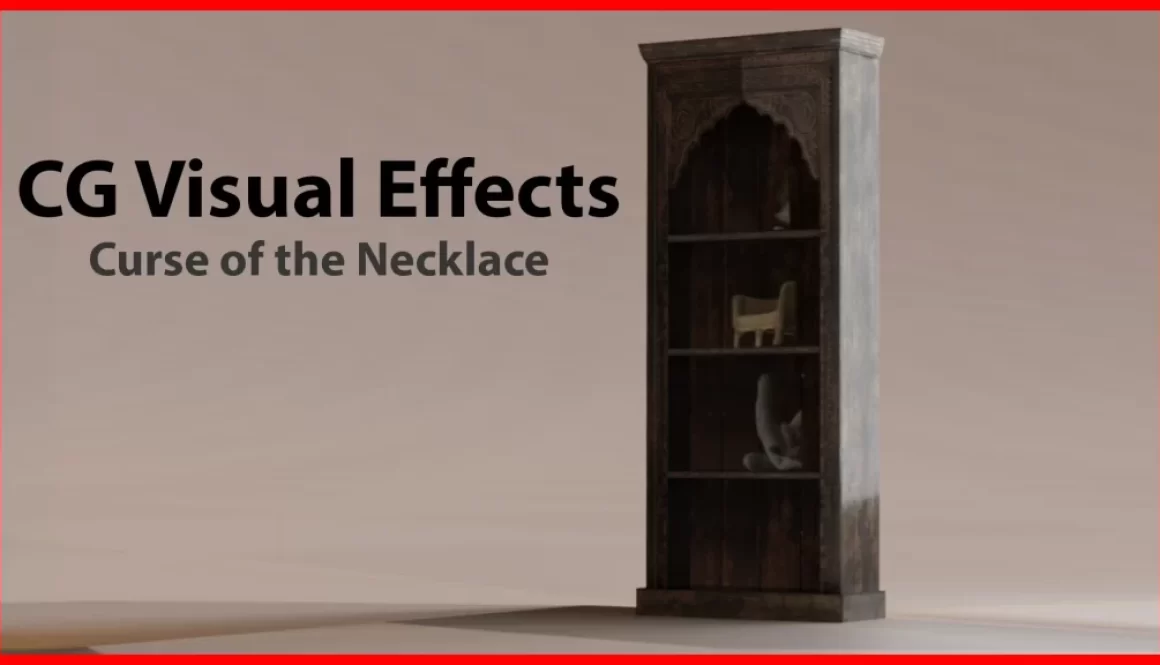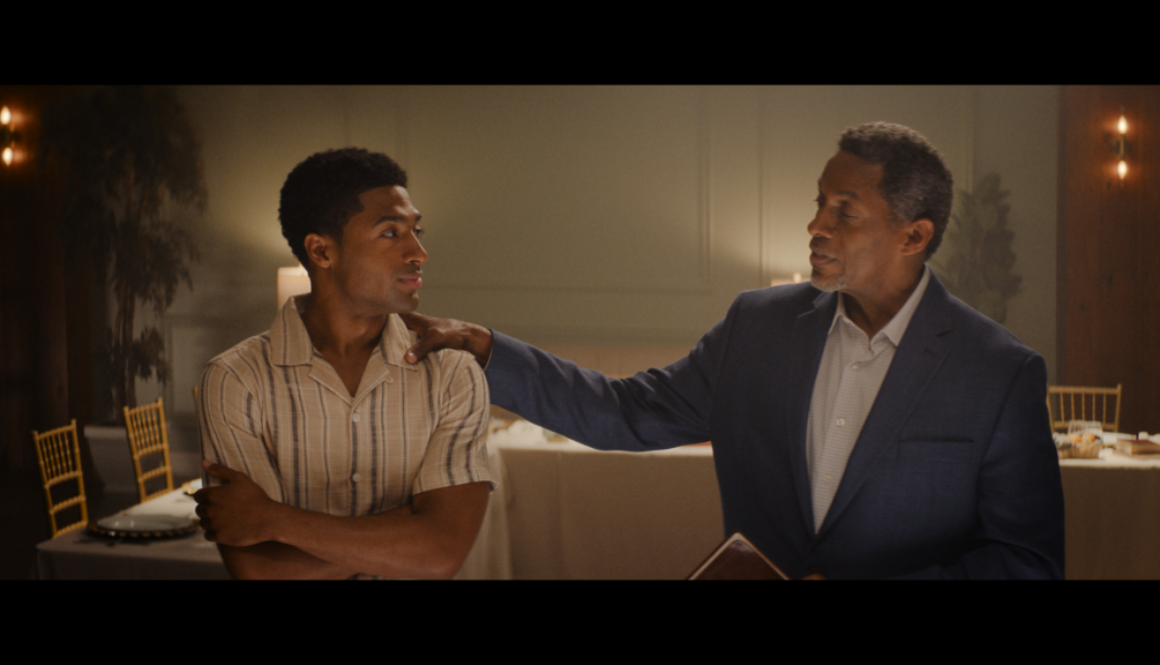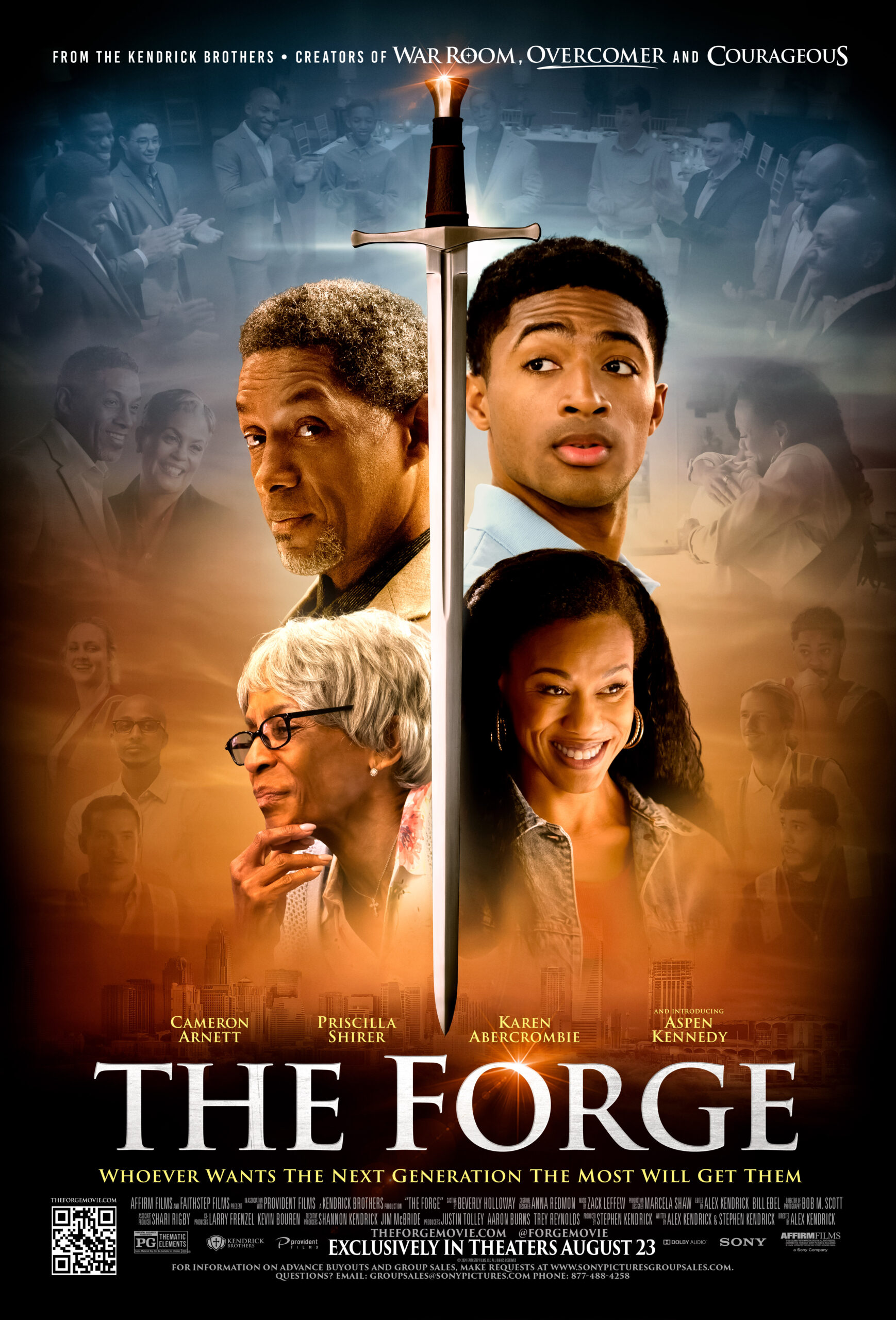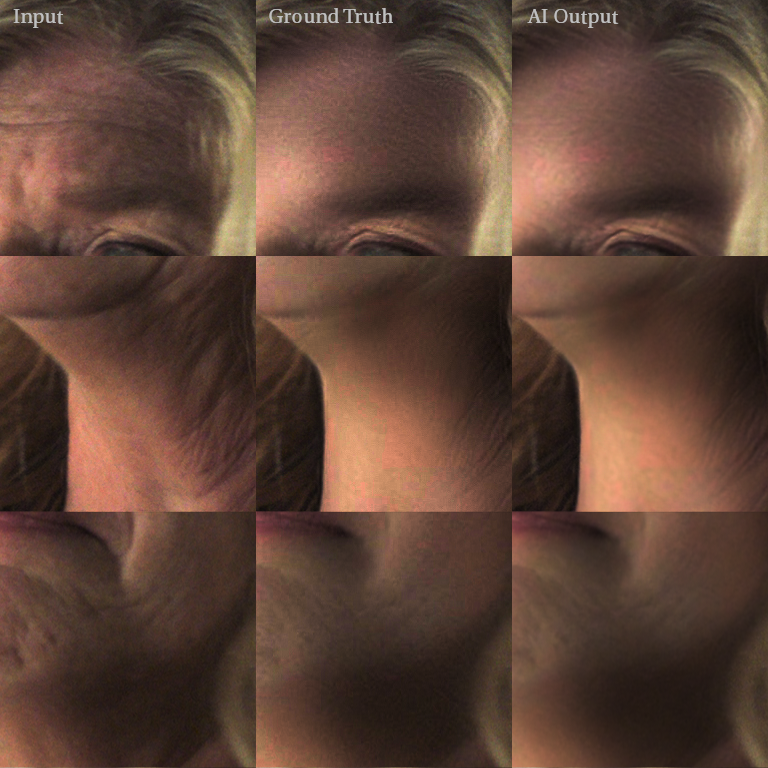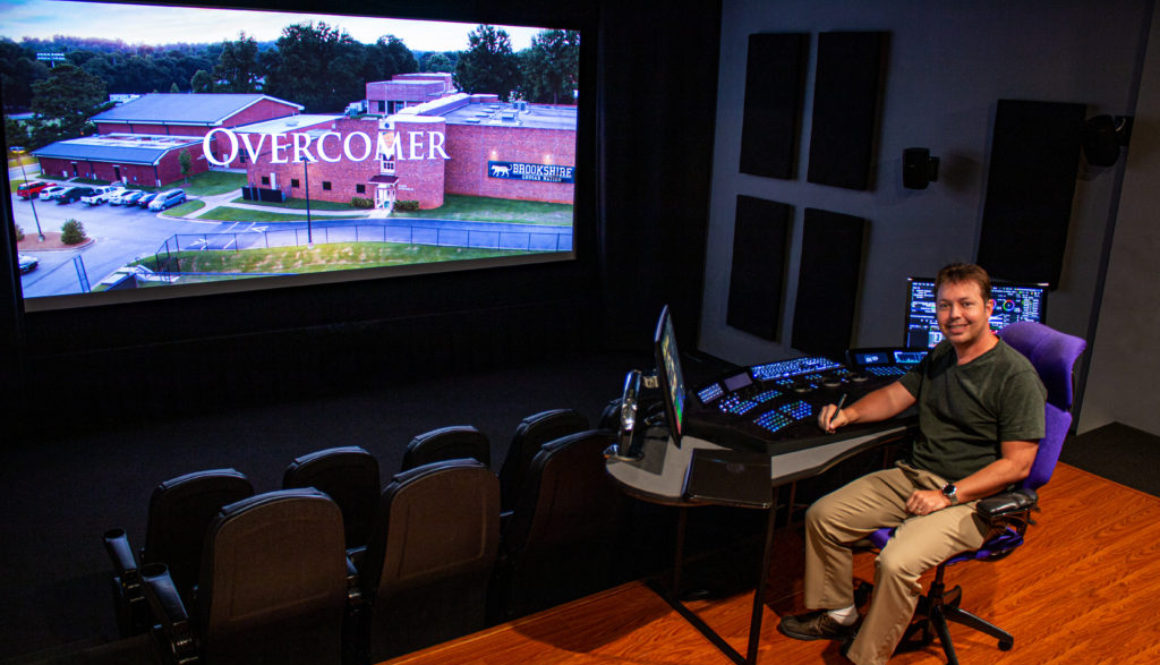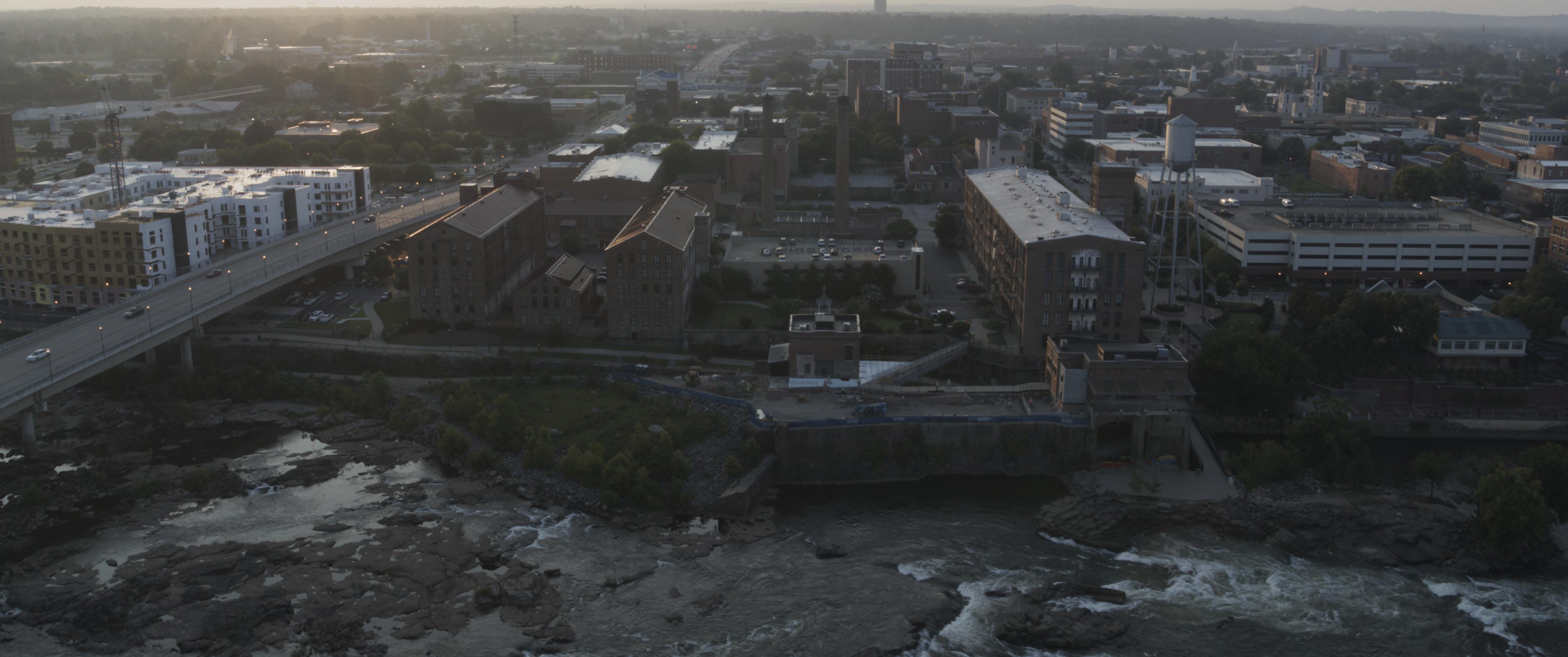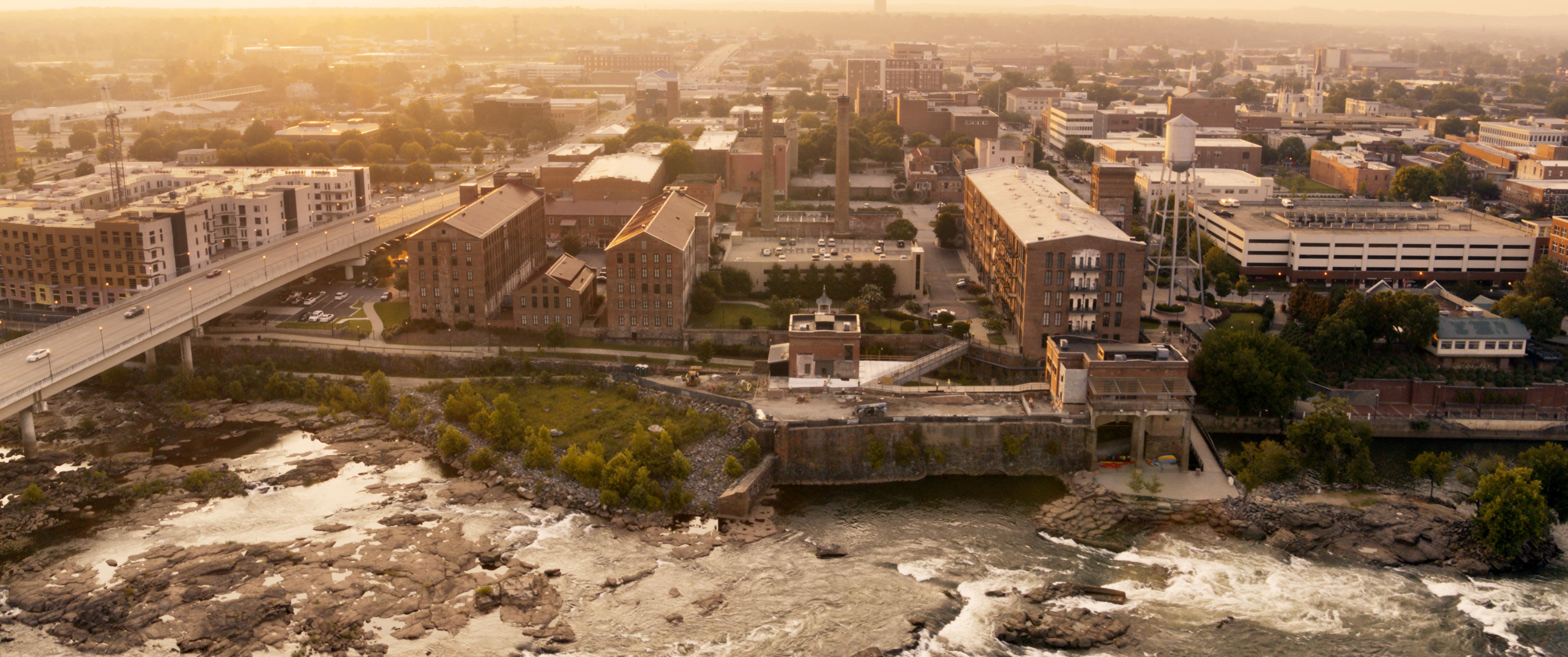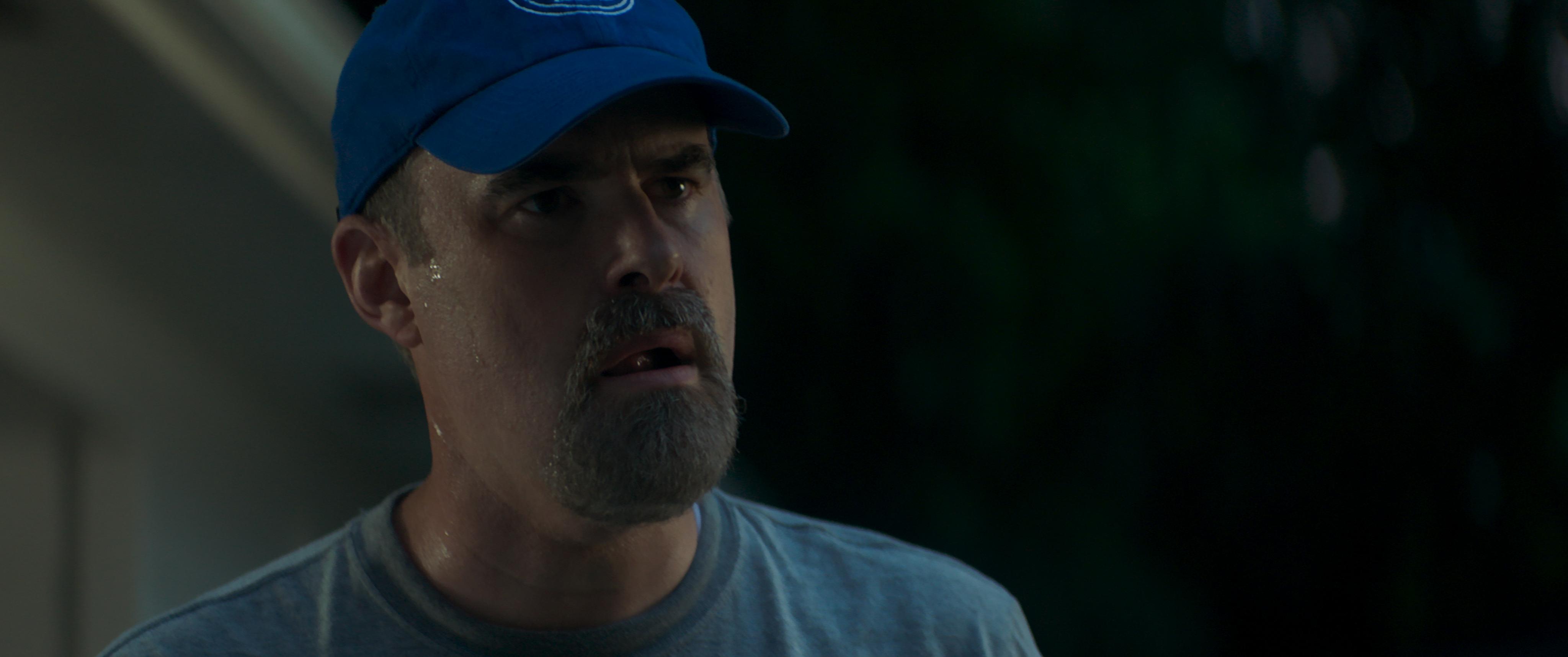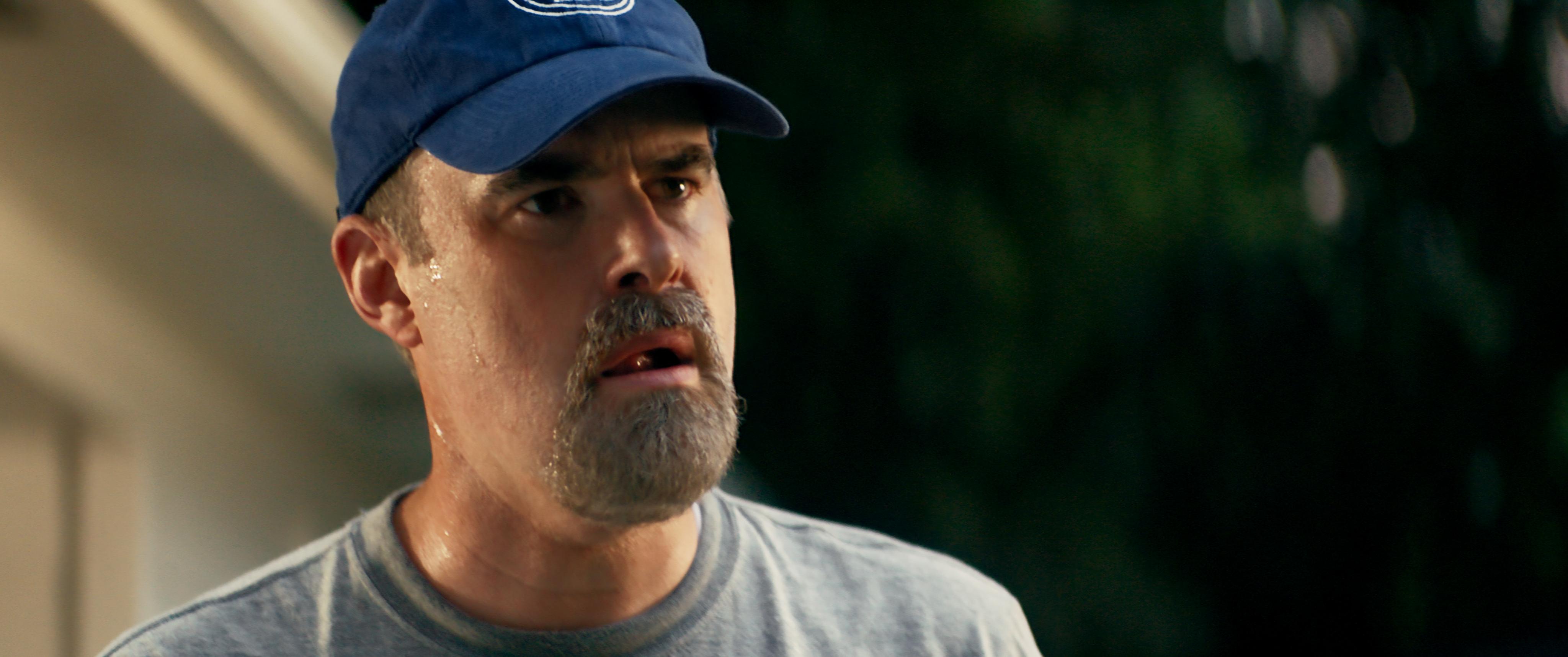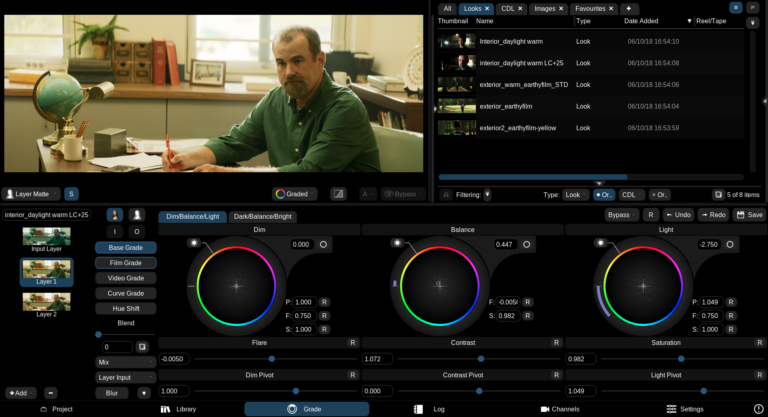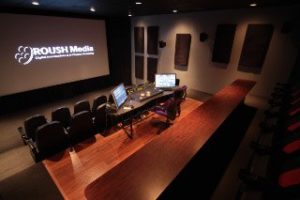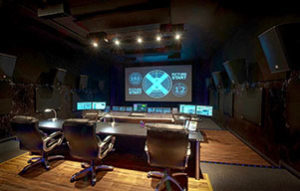This is a Transcript of the interview of Keith Roush Sr. Colorist & founder of ROUSH Media and Roy H. Wagner, ASC DOP.
Hi, my name is Roy Wagner. I’m a director of photography. I’m at Rosh Media today with my friend Keith. We’re talking about color timing. And Keith is a genius when it comes to color timing. And it certainly has changed since both of us got in this business. I’m sure you started with film just like I did. – Yes. – And I’d like for you to talk about that, talk about how it’s changed. – Sure, okay. So Rosh Media is a DI company, of course. So we are a picture finishing. I’m a senior colorist for future films, predominantly.(…) And what we do is conform and then color grade and deliver to all the different choices from theatrical to home video to HDR
(…)
that you would see on every platform that’s out there. – And you say you’re a DI facility, which means you’re a digital intermediate facility? – That’s correct. I kind of denote that, or I talk about that as a, the process in which we grade.
(…)
Data intermediate or digital intermediate,(…) it’s history and what that comes from is we used to scan film and then load the scan negatives into the grading system.
(…)
And then we would color time that on a theater screen and then ultimately print it back out the film. And it was a data intermediate or digital intermediate. – Now one of the most frightening things for a cinematographer, especially a young cinematographer to come into
(…)
was the lab.(…) Because the producers had already told us it costs a lot of money. And we didn’t understand any of the things that we were seeing in the old days when it was waveforms and vectorscopes.
(…)
It would take five minutes to 20 minutes for you to conform to the next step. And we weren’t sure if you wanted to know(…) what our next note was yet or whether you were still in the midst of the process. And certainly a lot of that has changed.
(…)
What I would like is for filmmakers to feel safe(…) when they come in here and know what’s expected of them and what the different terms mean so that they’re not afraid of them. Because even if you read them in the book,
(…)
it doesn’t make much sense. – So I work with a lot of variety of people with varied levels of experience. And it’s obviously a very special relationship between the colorist and the DP. And I’m here to ultimately serve the creative vision and help be that, that screen is my canvas, just like it’s your canvas, and it’s shared. And as being that, that’s our canvas,
(…)
there is, it’s a collaborative, creative process. And it needs to feel that there’s absolute trust and it needs to be between all the parties that are concerned. And I need to feel absolutely comfortable and the ability to explore options and ideas. And it’s collaborative so I can contribute to that so typically if the process typically looks like we would get the original camera negative,
(…)
we would then get the edit project from the editorial team. My team, it’s what we do, the DI process, is a team. Both, and it’s a collaborative process of art and science.(…) These conformed artists put the film together and get it ready for me as a colorist, a color.(…) And at that point then I like to ultimately try to figure out by talking to the DP and the director what their creative vision is. And that creative vision will help give me some ideas that I can put on the screen for them even before they come in. So I like– – Oftentimes you’re having to be the referee as well. – That’s true, that’s true. Sometimes there’s a little bit of politics in the room or so in that.(…) A lot of times the DP wants to push things darker and cooler and this and the director goes, I wanna see the emotion of the actor’s face and we’re kind of battling between the drama of the moment and the performance or something like that too obviously. But I like to give options and kind of get the vision and help translate that. And so for that safe, creative, collaborative environment, it’s not like, there’s no wrong thing you can say. In fact, I’d rather people tell me what they’re trying to do, what the emotion is of that scene, than try to tell me what button to push because largely those buttons have changed so much that that’s not the button to push at all. – One of the things I’d like this to be is an introduction to what this is and what the new technologies are and how they’ve improved or helped. – Sure. – Most of the new technologies have definitely helped and improved the expediency of the process. – What we’re doing is an extension of what you’re doing on set by when you are flagging that light or skimming this or throwing one of those scrims in a light or trying to get all those light ratios working just so with your light meters. And when you don’t have the time to do it as well as you’d like to, because those cameras, the ARRI or any of these cameras are shooting 14 stops of dynamic range with lots of contrast that’s available there, lots of stops of visible delineation between light, in the DI room then, you as a DP can say, you know what, knock that down a little bit. That’s a hotspot on its forehead, I didn’t see it, couldn’t get off or it was moving, it was impossible to get. I can do it faster and better than you could do it on set and it’s an extension of what you wanted to do. – This is critical. – Yes. – This is critical because a lot of the time, you know, if you have the whole package,
(…)
then if you use my theory or Ansel Adams theory about the images created in the dark room, if you have the whole capture there, it’s basically the zone system. – Absolutely. – On steroids. – Yes. – Whereas ProRes 422 or ProRes 444,
(…)
which are not even as much of a problem now as they used to be because of the compression issues,(…) it’s almost better to shoot everything in raw.(…) – Yeah, there are always exceptions to the rule,
(…)
but absolutely, generally, the payloads are bigger, more information that you can capture and the least processing that you can capture on set and be able to give more artistic control to the dark room so that you can really control that, how it’s gonna be for final fun on your canvas, the better you are. – What frightens cinematographers is that that gives more power to the studio, the producer, and the director.(…) This space is as political as the space between myself and the director on the set. – Sure.(…) – And what is incredibly critical is to develop a relationship with a colorist because oftentimes you won’t be there. And so that when the director or a producer or a post-production supervisor says, “I don’t want it that way, I want it this way,” that at least we get a call from our colorist who says, “This is what’s going on,” so that we at least have a chance to participate because oftentimes, once we’ve captured the image, they would prefer us just go away. And I’ve not had that experience personally, but generally people like for me to be a part of it, but there are those that don’t. And I find that if you have a friend in the colorist, then it’s a much safer environment and it’s even more of a reason to shoot raw because frankly, even if you balance the light perfectly,
(…)
there’s so much range now than there was with film that even putting a proper single in or a proper double in or proper shading, there’s always something that’s that green in the background is a little stronger than it should be. And you can do a power window on something that I could have never done. – Sure, absolutely. And I will say that ultimately, more information in raw is definitely good(…) and is preferable than in all raw sources, formats.(…) It doesn’t mean that you truly are any less creatively limited, generally when you’re shooting. And a good example is ARRI-RAW or ProRes Log C. And ARRI-RAW is more information and is generally only used on much larger budget films because the data payloads are much bigger.(…) And it’s really good for a visual effect sequences, but even on $10 million films, shooting Log C on ProRes 444, XQ or like that, yields you just as really good at results and as much latitude. – Yeah, in elementary we were using ProRes 422. – Yeah.
(…)
– Oftentimes I find it’s 422 or 444 and never raw. I always own features, I always do raw.(…) Just because I feel it’s safer.
(…)
We’re working so fast these days(…) that there’s things that you can definitely do that would take me much more time. But if you’re really a filmmaker, then you shouldn’t care. You should rather have as many options as possible. – Right, it gives more power to the director too, ultimately, and it’s not, I believe the image tells you what it wants to be based on really how you capture the light. Everything that’s in front of the sensor from the lens to the lighting, that’s never gonna change, truly. The image really does tell you what it wants to be. And I think good colorists respect that and have a healthy respect for that. And hopefully there’s a really good relationship between that DP and the colorist. So he’s helping to just realize that vision and helping to extend, and here’s a good example of that. You’re on set and you’re moving quickly. Time is always the other essence. You’ve got 100 people working around there and you would wish to have more time to tweak, to flag this light off of that. You know, the hot spot right here, or put a little more, another little light there and pop that up a little bit more. Because what you’re trying to do is take, in real life, this high dynamic range,
(…)
which is just a lot of light, and squeeze it down and fit it into something you can actually capture on some celluloid, or essentially on a file, okay, digitally. – Especially for a cinematographer like myself, is always shooting at dynamic contrast ratios. It’s critical to know how far you can go into that white, or the clipper as we used to call it. Or into the pedestal in the black.
(…)
– I like to say that part of my job is an extension of what the DP did on set and managing dynamic range. That’s a big part of it, of course. And helping get you what you want. And once you’ve approved that color, whatever device it is, whether it be in a theater or on a TV monitor, ultimately it’s been my job using technology as well as your eye to help make sure that translate across all delivery platforms. So I try not to, and I hope it doesn’t make it more complex for you at all, and it really shouldn’t. It’s basically, it’s your vision on the screen,
(…)
and all devices exactly the same, was within the realms of what that device is able to reproduce.
(…)
– So this is obviously something you know something about.
(…)
And what’s exciting about it is that it means that we can expand upon this. We can begin with simplistic observations so that a young filmmaker will understand what ACES is and how it’s different from the previous color space, technologies, and we can actually discuss how to paint a complicated or difficult shot.(…) And so I’m hoping that this is just the beginning of a beautiful relationship, to quote Humphrey Bogart.
(…)
And so until we meet again, thank you very much. – Absolutely, thank you.
